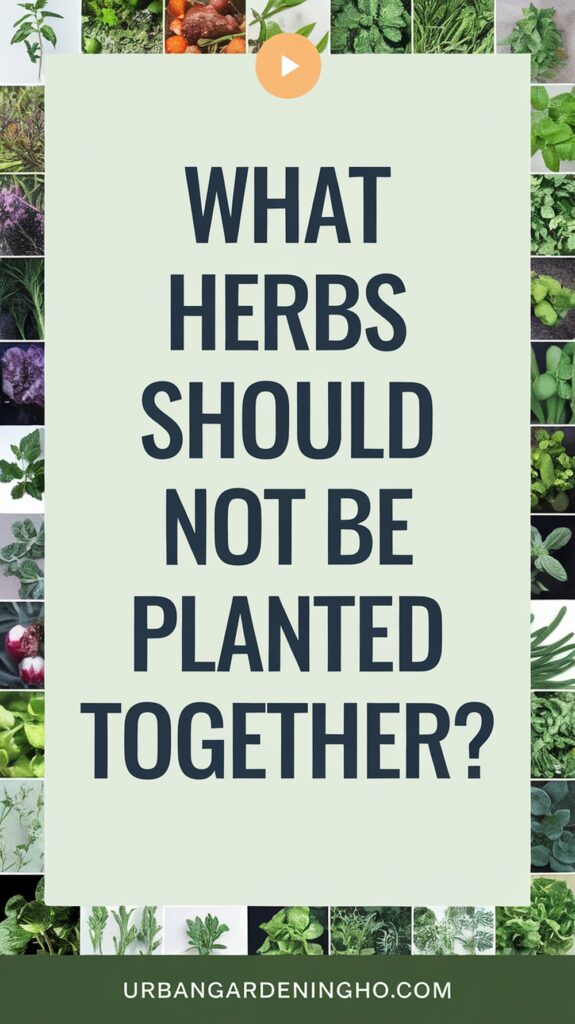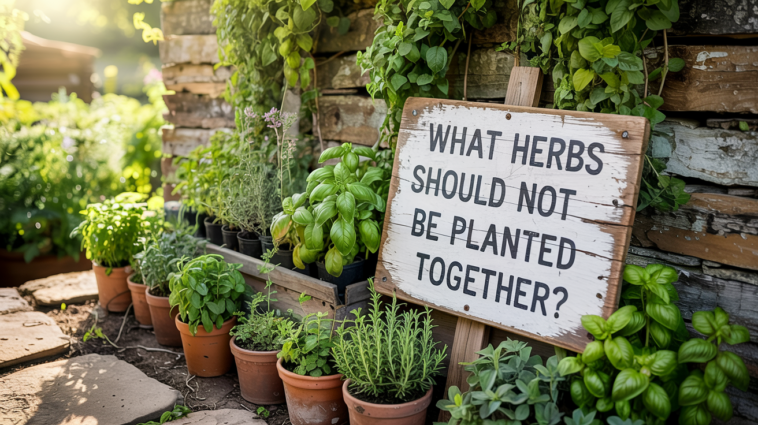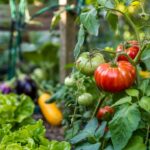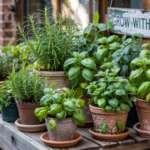When I first started growing herbs, I assumed they’d all get along just fine. After all, they’re all plants, right? But as I learned through trial, error, and a few sad-looking planters, some herbs just don’t thrive when planted side by side. Over the years, I’ve come to understand that herbs, like people, have preferences—some are loners, some are clingy, and others can be downright incompatible.
If you’re starting your own herb garden or struggling with growth problems, it might not be your watering or sunlight—it might be who your herbs are “rooming” with. In this post, I’ll share what I’ve learned about herb incompatibility so you can avoid common mistakes and grow a thriving garden.
Understanding Companion Planting with Herbs

Before I jump into which herbs shouldn’t be planted together, let’s talk briefly about why some herbs don’t get along.
Each plant releases certain chemicals from its roots or foliage—called allelopathic compounds—that can help or harm other nearby plants. These compounds might stunt growth, steal nutrients, or invite pests. Plus, some herbs simply have different needs—light, water, or space—which makes them bad neighbors even if they’re not chemically aggressive.
Learning which herbs do best solo or with specific companions will save you a lot of frustration.
1. Mint (Avoid Planting with Most Herbs)
Mint is one of my favorite herbs to grow because it’s low-maintenance and smells heavenly. But mint is a bit of a garden bully. Its roots spread aggressively and take over everything in sight. If you’re not careful, it will outcompete its neighbors for space, nutrients, and water.
Don’t plant mint with:
- Basil
- Rosemary
- Sage
- Thyme
- Oregano
My advice: Plant mint in its own container or give it a dedicated raised bed to roam freely. I even bury pots of mint in the ground to stop the roots from spreading.
2. Basil and Rue
Basil is a tender, sweet herb that thrives with friends like tomatoes and peppers. Rue, on the other hand, is a bitter medicinal herb with strong essential oils that can hinder the growth of nearby plants, especially basil.
Don’t plant together: Basil + Rue
Why? Rue can stunt basil’s growth and make it more susceptible to pests.
Tip: Keep rue in a separate container far from your culinary herbs.
3. Fennel (Best Grown Alone)
Fennel is a classic example of an allelopathic herb. It releases chemicals that inhibit the growth of many plants, including most herbs.
Don’t plant fennel with:
- Cilantro
- Basil
- Sage
- Mint
- Dill
- Oregano
What I do: I give fennel its own pot or a corner of the garden where it won’t affect other herbs. Trust me—your other herbs will thank you.
4. Cilantro and Dill
Cilantro and dill are both annuals and bolt quickly in the heat, but they actually don’t do well next to each other. Dill can cross-pollinate with cilantro, leading to odd flavors and reduced harvest quality.
Don’t plant together: Cilantro + Dill
Why? Their growing patterns clash, and they’re prone to attracting the same pests, which can increase infestations.
What works better: Pair dill with cabbage or onions, and keep cilantro closer to carrots or parsley.
5. Sage and Basil
Both sage and basil are fantastic herbs—but not together. Sage thrives in drier, rockier soils, while basil prefers moist, nutrient-rich environments. Their water and soil needs just don’t align.
Don’t plant together: Sage + Basil
Why? Conflicting environmental needs; basil won’t thrive in the dry conditions sage prefers.
Tip: Grow sage with rosemary or thyme, and pair basil with parsley or tomatoes instead.
6. Chamomile and Mint
This one surprised me. Chamomile is a calming companion for many herbs—but mint doesn’t like it. I found this out the hard way when my mint started wilting next to a flourishing chamomile patch.
Don’t plant together: Chamomile + Mint
Why? Chamomile can stunt mint’s growth by affecting soil chemistry, and mint’s spreading nature can overwhelm chamomile.
Better match: Chamomile grows well with basil or rosemary.
7. Dill and Caraway
Although these are more spice herbs than kitchen staples, dill and caraway are often planted close due to their similar look and habit. However, they’re known to cross-pollinate, which weakens both plants.
Don’t plant together: Dill + Caraway
Why? Cross-pollination leads to weaker plants and poor flavor.
A Few General Guidelines I Follow:
- Container planting is your best friend. When in doubt, grow herbs in separate pots. It gives you more control over soil, watering, and spacing.
- Pay attention to water and light needs. Herbs that love moist soil (like basil and parsley) do poorly when planted with dry-soil herbs (like rosemary and sage).
- Avoid crowding. Even compatible herbs need space to breathe. Too much competition leads to poor growth.
Herbs That Do Play Well Together
To end on a high note, here are some of my favorite combinations that thrive when planted together:
- Basil + Parsley – Both love moisture and similar soil conditions.
- Thyme + Rosemary – Mediterranean buddies that enjoy full sun and drier soil.
- Cilantro + Chives – Cool-season herbs that grow well in spring and fall.
- Sage + Oregano – Hardy perennials that don’t mind drier conditions.
Final Thoughts
It took me a couple of seasons to realize that herb gardening isn’t just about buying pretty seedlings and plopping them into soil. It’s about understanding each herb’s personality and giving it the space—and the neighbors—it needs to flourish.
If you’ve had a few herbs mysteriously die or struggle despite good care, the issue might not be your skills but their companions. Take the time to research and plan your pairings, and you’ll be rewarded with a vibrant, productive herb garden.


